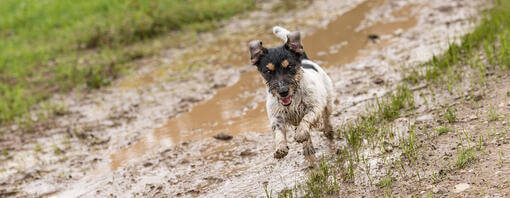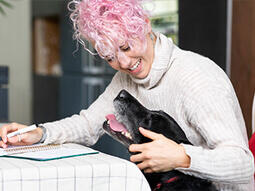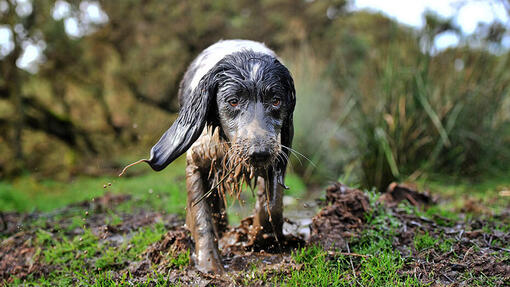
Alabama rot is a rare disease that affects dogs of all sizes, ages, breeds and genders. It was first discovered in Greyhounds in Alabama, USA in the 1980s, but cases dwindled out quickly. Many years later in 2012, cases with very similar signs were identified in the UK, and this is thought to be the same disease. There have been more cases reported in recent years but it’s unclear how much of this is because the disease is on the up and how much is because owners and vets are better informed about recognising the signs.
What is Alabama Rot?
Alabama Rot, also known by its scientific name, Cutaneous and Renal Glomerular Vasculopathy (CRGV), is a disease that damages the blood vessels of a dog’s skin and kidneys. It causes small blood clots to form in the vessels, leading to skin ulcers and kidney damage. It’s still very rare but unfortunately it has a very high mortality rate.
What causes Alabama Rot in dogs?
Due to the low number of cases, there has been little research done on Alabama Rot in dogs and currently it’s unclear what the cause is. According to The Blue Cross, some reports have linked the original US cases of Alabama Rot to E. Coli bacteria.
It’s suspected that there’s a link between Alabama Rot and muddy woodlands, as the majority of dogs who have contracted it had been walked in these areas prior to falling ill.
Alabama Rot symptoms
Alabama Rot symptoms you should be on the lookout for, including:
- Skin lesions: these may appear as just a small sore or a patch of red skin, though they can also be open and look like an ulcer. These lesions will usually be found below the elbow or knee but they can occasionally be on the face, chest or abdomen.
- Kidney failure: A variable time after the skin lesions appear – between one and ten days – kidney failure can develop. Symptoms of this include vomiting, lack of appetite and lethargy. For more information on kidney failure in dogs, check out our guide.
Diagnosing Alabama Rot in dogs
If you suspect your dog has Alabama Rot, you should take them to be checked out by your vet. If they just have a skin lesion but are otherwise well in themselves, it can be tricky to establish whether Alabama Rot is present. This is because most skin lesions will not be due to Alabama Rot, and there’s no specific diagnostic test for this disease as the cause is unknown. However, that being said, skin lesions can be an early warning sign and it’s important to get any concerns checked out. Your vet will likely ask you questions about where your dog’s been, and rule out general injury and other skin conditions.
If your dog is unwell in themselves or showing any of the signs that may suggest kidney failure, it’s imperative that you take them to the vet immediately for treatment. Although the mortality rate is very high for this disease, speedy veterinary treatment has been successful in helping some dogs survive suspected cases of the condition.
Sadly, according to The Kennel Club, the only way to confirm for certain whether it’s Alabama Rot at the moment is by looking at a kidney sample once the dog has passed away. However, this will hopefully change in the future as charities and veterinary experts are working to learn more about the disease.
Treating Alabama Rot
If your dog has a skin lesion but is otherwise well, your vet may offer treatments such as ointments and potentially oral antibiotics if needed. If your vet is suspicious that the lesion may be caused by Alabama Rot, they may also suggest monitoring kidney function using blood tests and urine tests.
If your dog develops kidney failure, treatment is more complicated. It’s likely that your dog would need to be hospitalised and kept on supportive care. The Royal Veterinary College have recently found that a treatment called Therapeutic Plasma Exchange can help some dogs recover from Alabama Rot – this specialised treatment involves filtering the blood and then returning it to the patient.
Preventing Alabama Rot
With the cause of Alabama Rot up in the air, it’s hard to plan to prevent the disease as there’s no set-in-stone way to avoid it. But, as experts have identified a link with walking in muddy areas, here’s a list of things to do to reduce your dog’s risk of contracting it:
- Wash off any mud as soon as possible – we don’t know if this will prevent the disease, but it will at least make it easier to pick up on any lesions.
- Check your dog’s skin regularly, and call the vet if you find any lesions.
If you want to find out more dog illness symptoms to be on the lookout for, read our guide on Cushing’s Disease in dogs, or Luxating Patella next.














